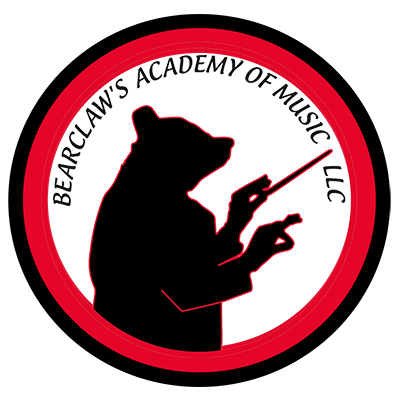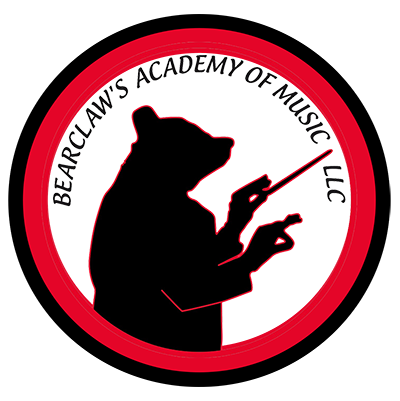 Originally published in Bass Gear Magazine
Originally published in Bass Gear Magazine
On August 24th, 2019, life as I once knew it changed forever; a little band out of Boston, MA named Aerosmith were to blame. I have been to multitudes of live performances over the past thirty plus years, but this particular show in Springfield MGM Theater resonated with me, and it still does, months later. I am truly embarrassed admitting this was the first time seeing the guys live, and even more shameful admitting that I passed on an opportunity to see them back in the early ‘90s because I was “a little under the weather.” “Really, Joe, that was your lame ass excuse?” In the words of the mighty Cher, “If I Could Turn Back Time.” I can count on one hand live performances that have really moved me to the point of leaving the venue in complete and utter awe, this was one of them! Words cannot describe the sheer power and command Aerosmith holds on its audience; this can only come from decades of experience, and it truly shows. In 2020, the band will celebrate 50 years in the biz; not a small feat if you ask me, and they’re currently holding down residency at The Park Theater in Vegas until the end of this year. I had the pleasure meeting and sitting down with the band’s anchorman, Tom Hamilton, a legendary bass player who exudes strength in holding down the groove, and navigating the ship amongst a wall of guitars and squeals emanating from his bandmates. I wanted to touch on topics ranging from gear choices to the writing sessions for Pump and Nine Lives, two of my all-time personal favorite releases from the band. So, without further ado, the one, the only, Mr. Tom Hamilton………….
JB: The band will embark on its 50th Anniversary celebration going into 2020. What goes through your mind when the reality of being together for this long with these four other individuals really sinks in? Explain for us the glue that has kept Aerosmith together for almost five decades, what are the key ingredients needed for longevity?
TH: When I think of how long we’ve been doing this, it’s amazing. I just go back to thinking about what’s going on now and what’s going to happen in the future. What really boggles my mind is how many fans we have and the fact that probably in every country in the world, there are people that are into the band. I guess that’s one of the most profound results of us being together for almost fifty years.
The elements of the glue that holds us together go back to the late seventies or early eighties. Those were the years when we let it fall apart. By that time, we had wives, girlfriends, cars, houses and enough money to be as stoned as we wanted. We were out on tour playing stadiums. We were on the autobahn of our success, but the car was breaking down. The engine was overheating. We were stressed and fatigued, and we all blamed each other for why it was that way. We had been struggling to get the Night in the Ruts album done, but we had to break it down and hit the road, because the tour was already booked. Little things felt like big things.
It all came to a head and we just figured if we got different people it would all be better. It took almost four years for us all to realize what an amazing thing we threw away. Luckily, the fans were right there waiting when we put it back together. I think the memory of that and how fortunate we were to get it back is a big part of why we’ve stayed together.
JB: A highlight moment of the live show was your bass solo during Sweet Emotion. it went into a middle eastern/Indian drone feel before kicking into the opening riff we all know and adore from hearing on terrestrial radio. A true example of band chemistry was displayed when Steven walked up to you and put his arm around your shoulders scatting verbatim the bass melody coming out of your fingers. Is this a pre-conceived part of the show, or do you just “go for it” each night with free form improvisation?
TH: I was probably playing the vocal melody from a Stones song called Two Thousand Man. Actually, now that I think of it, it was most likely the melody of a Beatles song called Within You Without You. I was fooling around with it before we went on one night and decided to play it before Sweet Emotion. I just kept the A string droning and played against it on the G string. Steven picked up on it and came over and we made a moment out of it. It wasn’t planned. He heard it and decided to join in, which was cool. That solo moment right before Sweet Emotion has always been kind of a daunting challenge for me, unless I have some germ of an idea to start with.
JB: On the topic of cool and interesting bass hooks, lets rewind back thirty years to 1989’s Pump album and the mega-hit single Janie’s Got A Gun. Is it true the chord sequencing originally came out of demos for the Permanent Vacation era, and give us a breakdown of what went into the songwriting process between you, Steven and the band? Was there a key moment during writing and recording where you both looked at each other and said, “We have a hit on our hands”, or did it take time for the song to gel?
TH: We were right at the time when everybody brought their song ideas in to get the process started on what became the Pump album. I had this thing that started with plucking the harmonics at the seventh fret on the G and D strings, and while that was ringing, playing the notes that became the intro to Janie on the E string. My song idea seemed to fall on deaf ears, but about a month later, when we were well into arranging the songs for the album, Steven came in one day and proceeded to play the complete version of the song, start to finish. We all stood there knowing we were hearing something really amazing. I noticed that Steven had used the intro of the song that I had brought in. I was a little miffed, but decided not to make an issue of it at the moment. Sometime later, when we were almost finished with the record, Steven called me one day and said, “Hey I’m puttin’ your name on Janie’s Got a Gun.” Of course, I was really happy about it, but the song was really written by Steven. If my little idea at the beginning led to that masterpiece, so be it.
JB: You worked with producer Bruce Fairbairn for a handful of years up until the Nine Lives project. What did he bring to the table that helped levitate the band to chart-topping, hit-making machine status? Was it more of relocating up to Vancouver, B.C. away from the distractions, or did it go way beyond logistics?
TH: Bruce was a talented musician who became an even more talented producer. John Kalodner from Geffen suggested we use him, so we tried him out. He was a good coach who wasn’t intimidated with working with this famous band. He was a great organizer and really knew how a good album is made. He had everybody’s respect. We went up to Little Mountain, a studio in Vancouver and got started. We were blown away with how beautiful that city was, and I think that had a real effect on everybody’s inspiration level. Bruce was really demanding, but also a great guy.
JB: Talk to me about your rhythm mate Joey Kramer – he wasn’t involved with the early writing and recording sessions down in Miami for the Nine Lives album. Legendary Average White Band drummer Steve Ferrone was brought on board to fill in. What prompted this move, and how was it adjusting to someone else behind the kit? At this point in time, you and Joey had been a tight rhythm unit for over twenty-five years. It’s not an easy situation for anyone to come into when such a long history of brotherhood has been established, is that safe to say?
TH: We were just at the beginning of putting material together for what became the Nine Lives album. Joey was having some problems that he needed to get some help with which meant he would be unavailable for the next month. Our manager felt really strongly that we had to stay on schedule with the release date of the record and with some other events that were written in stone. I forgot how we got in touch with Steve Ferrone, but we asked him to come in and fill in until Joey’s return. Steve’s a great guy and a fantastic drummer. We got along really well with him and he picked up the arrangements to the songs very quickly. His time sense was rock solid, so I had no trouble getting tight with his style. I’m pretty adaptable, in general, anyway, so that helped.
JB: Once Joey returned to the fold, the band decided to re-record most of the material. Looking back now, are there any tracks that stood out during the Ferrone era you enjoyed playing, or was it just too strange and uncomfortable not having Mr. Kramer sitting behind you on the drum throne?
TH: It’s really ironic that after all that angst of not having Joey there, we re-recorded everything, anyway. We re-visited the material with Kevin Shirley, who was really making his name as a great hard rock producer. Except for a couple of songs, everything sounded better in general, right away. Someday, it might be interesting to break out all the tracks we recorded with Steve and see if any of those cuts could be part of a box set or something.
JB: Talk to me about your relationship with Joey after all these years. Do you instinctively know what each other will play and rely more on feel than eye contact to communicate, or does it still require a little bit of both for you to meet each other half-way when performing live? Do you find each other playing on top of the beat due to adrenaline, or is there a conscientious effort made to rein in everyone by pulling back the band a bit? I am sure having another drummer (such as Steven) in the band only enhances attention to detail regarding tempo fluctuations and rhythmic patterns?
TH: There are so many ways that Joey and I communicate that I don’t even notice them anymore. I can usually anticipate what kind of fill Joey will use. Having said that, there’s also a lot of eye-to-eye communication too, especially if we’re not on the same page, tempo-wise.
JB: Let’s talk gear. I had the pleasure of getting a firsthand look at your live rig backstage. How long have you been using GK amps, and tell us a little bit about your backline signal chain. I noticed no pedal board being used on stage. Are you opposed to foot-stompin’ or have pedals never been a part of your live arsenal?
TH: I’m going to guess that I’ve been using GK gear for 20 years or so. I was initially attracted to how easy it was to get a solid, fat tone with their stuff. I can’t stand using bass equipment that’s overloaded with redundant controls. I like simplicity and directness. I noticed right away that I could get a great sound that would integrate easily with the sound coming from Joe and Brad. My signal chain is pretty simple. Some of it goes straight to the FOH board and some of it comes from making the cabinets. I use a little chorus on parts of songs like the intro to Sweet Emotion and distortion on the interludes between the verses. If we play Same Old Song and Dance, I use distortion on the end of the song where I have a solo. I’m always searching for a great overdrive sound. I must have tried virtually every pedal out there, but I’m still searching.
JB: Back in 2013, G&L developed your signature ASAT bass model. I noticed one in the green room right by your side when we spoke backstage. Tell us about what into the design and why you have stuck with G& L for all these many years?
TH: I’ve been using G&L’s for ages, but in the beginning, they were mixed in with an assortment of other basses. Gradually, I realized that the ASAT was covering all the bases (hehe, pun). Then one day, a local rep dropped off a gold sparkle one that just grabbed everybody by the eyes, especially mine. I plugged it in and it sounded great. The next thing I know, I’m talking to the guys at the company about a signature line. We talked about colors, pick-ups, necks, finger boards, etc. I just think they make great looking, great playing instruments. G&L was the third and last company that Leo Fender started and his thoughts about what a guitar or bass should be are reflected in these new instruments.
JB: We haven’t heard much of your bass playing outside of the Aerosmith camp. Have you ever written or recorded with other musicians, and if no, do you have a bucket list of people you would like to work with, or even produce?
TH: I played a bunch of shows with the Thin Lizzy guys. They wanted to go out and do a tour to commemorate the thirtieth anniversary of Phil Lynott’s death. They invited me to play bass. I was pretty nervous because it was the first time I’ve ever done anything outside of my band. I busted my nut learning the songs, but when I got to the first rehearsal, I realized I should have worked even harder. Not only that, but I’m a finger player and Phil played with a pick. Luckily those guys are great to be around and they helped me get up to speed. I had a blast. What a bunch of great songs!
JB: I wish to depart on this one last question, what advice would you give younger aspiring bass players who may possess that certain itch to start a rock band gigging beyond the city limits of their home state? Also, does a positive belief system play a role within one’s success?
TH: Well, you have to do the woodshedding. I wish I had taken lessons and maybe even learned to read when I was young. It’s important to choose established bass players and study them to give yourself a vocabulary. For me, it was all guesswork. I would choose a song, learn the chords and make up my own parts that I thought sounded close to what was on the record. It left me with an awful lot to learn when we put the band together.
I would say that a positive attitude is a must. Joe and I went to see a band called Spirit when we were teenagers. I watched the bass player and just felt I could do that. If you want to be in a band that makes it, you have to be good on your instrument but, just as important, you have to be a good band member. You have to be able to hang and be adaptable. And by the way, if you want to have a plan B … THERE IS NO PLAN B!!


